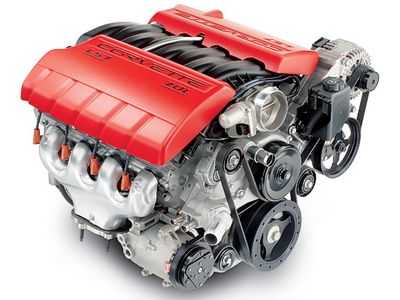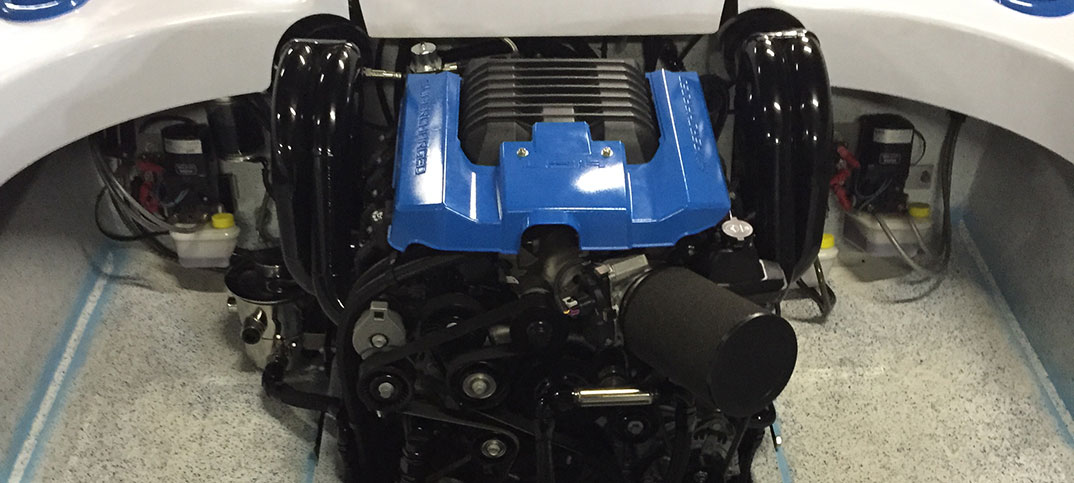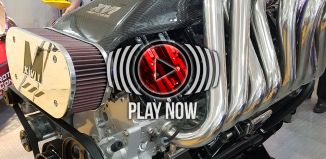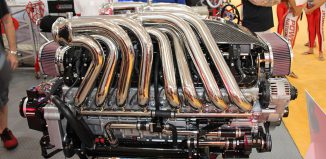Over the last decade, the GM-based LS engine program has forever altered the world of motor sports. That is the case for every industry EXCEPT the marine industry. Very few have been adapted to marine use, and those like the one pictured above are very custom jobs. Speculation has surrounded the issue for as long as most can remember, causing most people to fall for old wives’ tales like “Turbo engines could never work in the marine world!” Until, of course, Mercury Racing made them work and now everyone is looking around, wondering what took so damn long. Well, just as we have come to accept the efficiency of turbos as commonplace in the boating world, that same wisdom tells us that the archaic BBC architecture that has been around for 50 years is akin to the rotary telephone. You can still potentially get the job done with it, but there’s more modern solutions. In that same vein, we have it on good authority that the latest GM architecture for LS engines can’t even be denied by Mercury for any longer.

As the LS engine rebuilt the entire wakeboarding market and propelled Ford back into the marine industry, it seemed like only a matter of time as to how long Big Black (or Blue, depending on your choice of power) could sit on its hands and watch a powerful potential driving force for its entry level market slip by.
The dilemma Mercruiser faces while trying to separate itself independent of GM products and be their own engine manufacturing powerhouse is doing so in difficult economic times for many segments of the market. Their choices to focus on big outboards and turbo charged engines proved more than successful; the next logical evolution is to fill this hole in the market the 8.2L has attempted to plug, and to improve on what was left to be desired with the HP565. The 50+ year old technology in these engines just haven’t made enough horsepower gains, with minimal if any efficiency gains. The consumer is beginning to upturn their nose and say “enough is enough.”
It’s good to see that companies will soon respond to this consumer reaction, since many powerboaters could only watch helplessly for years as they saw huge advancements in power & technology for their cars & trucks, but little if any for their boats.
We have multiple sources confirming numerous companies are already hard at work building the goods to support Mercury’s latest efforts in this advancing technology. It couldn’t come at a better time; if this engine does a fraction for the marine industry of what it’s done for any other segment of motor sports, the future of powerboating looks brighter than ever.








